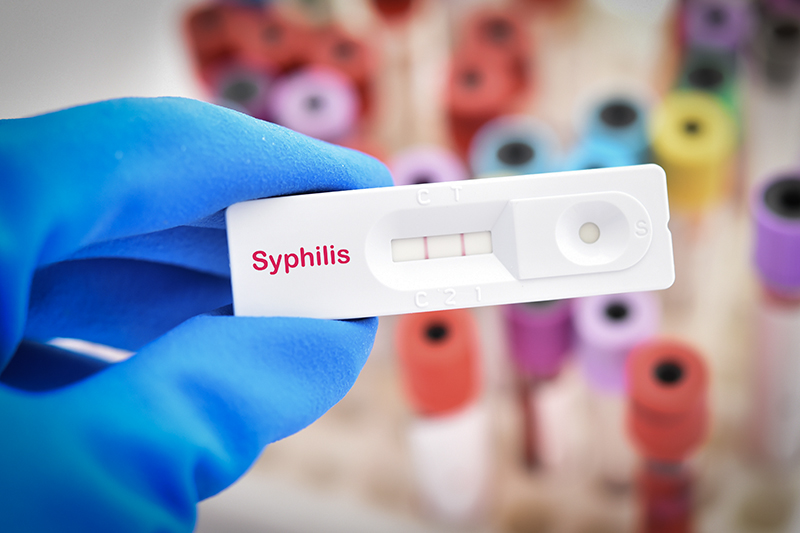District Releases Annual HIV Report
Mayor and other city officials tout progress, announce initiatives to move HIV-positive people beyond inconsistent care
The theme yesterday with regard to HIV/AIDS and other transmittable diseases affecting the District was that progress is being made, but there’s certainly more work to be done.
Mayor Vincent Gray (D) and officials from the District’s Department of Health (DOH) and the HIV/AIDS, Hepatitis, STD and TB Administration (HAHSTA) released the 2011 District of Columbia HIV/AIDS, Hepatitis, STD and TB Epidemiology Annual Report at a June 20 briefing at N Street Village, in the city’s Logan Circle neighborhood. DOH also released a new study on heterosexuals and HIV-infection rates, and announced new recommendations for health providers designed to link HIV-positive individuals with treatment that will help them achieve full suppression of the virus.
Saying he thought the DOH/HASTA report ”contained a lot of good news,” Gray announced several developments, including that the number of deaths among people infected with HIV in 2006 had decreased by almost half by 2010, and that no child has been born with HIV in the District since 2009.
”When you look at the data, I think what you’ll come away with is a picture of progress,” Gray said.
Gray also focused on a couple of initiatives that the District is undertaking, including matching people who test HIV-positive with the resources necessary to pursue treatment, as well as holistic approaches.
Gray touted a 32 percent decrease since 2006 in the number of new AIDS cases, down to 207 in 2010, and a 27 percent decrease in the number of new HIV cases, down to 835 in 2010. He also lauded an increase in testing for HIV and other STDs, particularly among youth in the District’s schools, with 4,300 tests being administered.
Pointing to his own commitment of getting tested annually for HIV, Gray stressed the importance of ”staying the course” and helping people understand the importance of prevention, education, regular testing and counseling in combating HIV/AIDS, saying the terms ”should be part of our everyday vocabulary.”
Dr. Mohammed Akhter, director of DOH, attributed the report’s finding of a 70 percent decrease in intravenous drug use since 2006 to the District’s expansion of clean needle-exchange services in 2007. Pointing to a chart showing data trend lines, Akhter emphasized that as the number of clean needles exchanged increased, HIV-infection rates due to intravenous drug use decreased.
”This is tremendous progress. It’s a big, big victory for the city and the needle-exchange program,” Akhter said to strong applause. ”If anybody in the Congress tells you they need to shut this thing down, they need to look at this data.”
According to Akhter, the biggest challenge facing the District in terms of managing the care of those infected with HIV is making sure they follow through on treatment. Of the 4,879 cases of HIV diagnosed from 2005 to 2009, only 1,391 cases were able to be matched with treatment specialists and continue their care on a regular basis to achieve full viral suppression, dramatically lessening the possibility of transmitting the virus to others.
Because of the high number of infected people who receive care sporadically, Akhter said that community-based organizations need to provide more support to ensure infected people can eventually achieve full viral suppression.
Additionally, Akhter said that DOH has adopted new recommendations for medical providers to start treatment immediately when a person is diagnosed, rather than waiting for a person’s CD4, or T-cell, count to fall to or below 350.
Akhter also announced that the District would be undertaking a new initiative, to coordinate existing resources – at no additional cost to the District, he says – to establish ”medical homes,” or places where people can seek holistic treatment for HIV and other conditions. He said the medical homes could be especially effective in tracking HIV-infected residents, reminding them to continue treatment.
”It is our commitment … that by the end of this year, we will be designating medical homes for HIV,” Akhter said. ”Because we want to make sure every single person who wants to get diagnosed gets to this point, where their virus is under complete control.”
In response to the report, Whitman-Walker Health, the community health center specializing in LGBT and HIV/AIDS care, issued a statement.
”This progress is most welcome, but now is not the time to take a summer vacation in the fight against HIV,” Whitman-Walker’s Executive Director Don Blanchon was quoted as saying. ”While it will take time to bring this epidemic under control, we are pleased to see the city has made tremendous progress over the last few years. However, that progress can be lost if we don’t continue with sustained, science-based community action.
”This is no time to rest on our past accomplishments when hundreds of D.C. residents are still contracting HIV every year. In 2010, D.C. reported 835 new cases of HIV and 207 deaths from AIDS. Our work will not be done until these numbers are zero.”
Councilmember David Catania (I-At Large), chair of the D.C. City Council’s Committee on Health, also issued a statement praising progress made, particularly in light of the change in the quality of data collected by the survey. In 2006, D.C. began moving from a code-based system to a names-based system of tracking patients who tested for HIV.
”The strength of the District’s response is a direct result of the quality and quantity of data we now regularly collect,” Catania said in a release issued by his office. ”Our policy and program decisions are driven by our data, and, as a result, are reaching and benefiting at-risk and infected individuals. … The report makes clear that we still have a tremendous amount of work to do, but with our data we can continue to effectively face the challenges of this deadly disease.”
According to the report, the leading mode of transmission among black residents was heterosexual sex, 37 percent, followed by homosexual sex, 29.4 percent; and intravenous drug use at 13 percent. Among whites, Hispanics and people of other racial backgrounds, homosexual sex was the leading mode of transmission, at 81.1, 60.7 and 51.9 percent, respectively.
Ward 8 had the highest proportion of adults and adolescents living with HIV, with 3.1 percent; followed by Wards 1 and 5 at 2.7 percent; and Wards 6 and 7 at 2.6 percent. Ward 1, however, had the highest number of people living with HIV, 1,913 residents.
Ward 3 had the lowest rate of people living with HIV, at 0.5 percent; followed by Ward 4 at 1.9 percent and Ward 2 at 2.1 percent.
The report also tracked the prevalence of other transmittable diseases, including hepatitis, chlamydia, gonorrhea, syphilis and tuberculosis. According to the report, chlamydia was more prevalent among women, blacks and youth ages 15 to 24; while reported cases of gonorrhea were divided almost evenly between men and women, and were prevalent among blacks and youth ages 15 to 24. Both diseases are most prevalent in neighborhoods east of the Anacostia River.
On the other hand, syphilis cases, which declined since 2009 but are still significantly higher than the numbers reported in 2000, consistent with national trends, were more prevalent among men who have sex with men (MSM) and in Wards 1 and 2.
Data specific to transgender residents was not part of the report. Tiffany West, chief of DOH’s Bureau of Strategic Information, said that national reporting standards, which the District follows, do not track transgender people as a separate group, but instead count those individuals statistically by their assigned sex at birth. She added that other studies, however, show a prevalence of HIV and other STDs among transgender D.C. residents three- to four-times greater than infection rates of the general population.
Support Metro Weekly’s Journalism
These are challenging times for news organizations. And yet it’s crucial we stay active and provide vital resources and information to both our local readers and the world. So won’t you please take a moment and consider supporting Metro Weekly with a membership? For as little as $5 a month, you can help ensure Metro Weekly magazine and MetroWeekly.com remain free, viable resources as we provide the best, most diverse, culturally-resonant LGBTQ coverage in both the D.C. region and around the world. Memberships come with exclusive perks and discounts, your own personal digital delivery of each week’s magazine (and an archive), access to our Member's Lounge when it launches this fall, and exclusive members-only items like Metro Weekly Membership Mugs and Tote Bags! Check out all our membership levels here and please join us today!


























